Abstract
Data from EPA's TEAM Study allow us to identify the major sources of exposure to benzene for much of the U.S. population. These sources turn out to be quite different from what had previously been considered the important sources. The most important source of exposure for 50 million smokers is the mainstream smoke from their cigarettes, which accounts for about half of the total population burden of exposure to benzene. Another 20% of nationwide exposure is contributed by various personal activities, such as driving and using attached garages. (Emissions from consumer products, building materials, paints, and adhesives may also be important, although data are largely lacking.) The traditional sources of atmospheric emissions (auto exhaust and industrial emissions) account for only about 20% of total exposure. Environmental tobacco smoke is an important source, accounting for about 5% of total nationwide exposure. A number of sources sometimes considered important, such as petroleum refining operations, petrochemical manufacturing, oil storage tanks, urban-industrial areas, service stations, certain foods, groundwater contamination, and underground gasoline leaks, appear to be unimportant on a nationwide basis.
Full text
PDF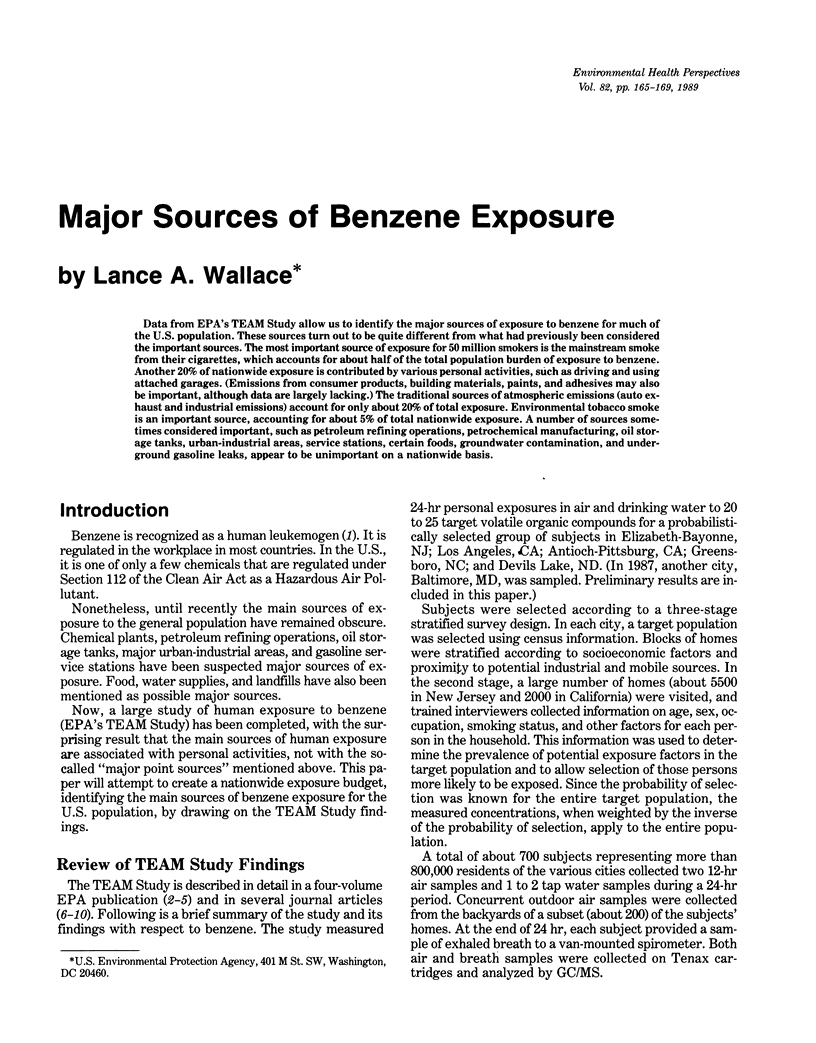
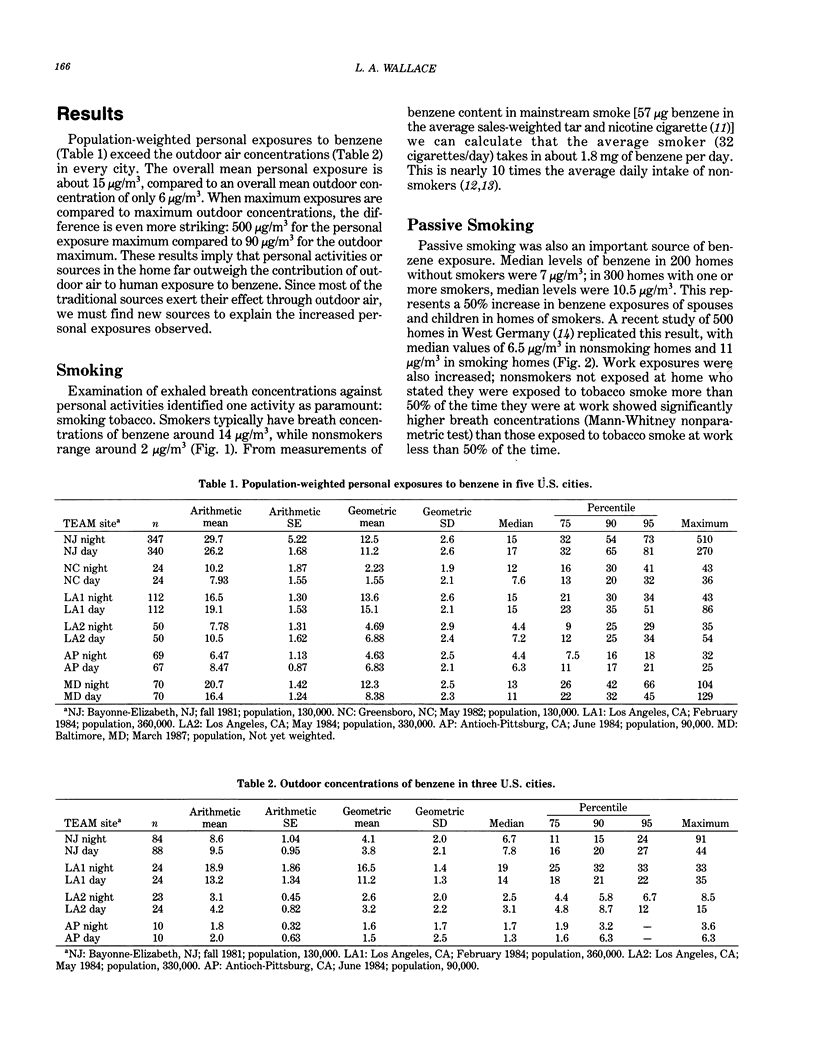
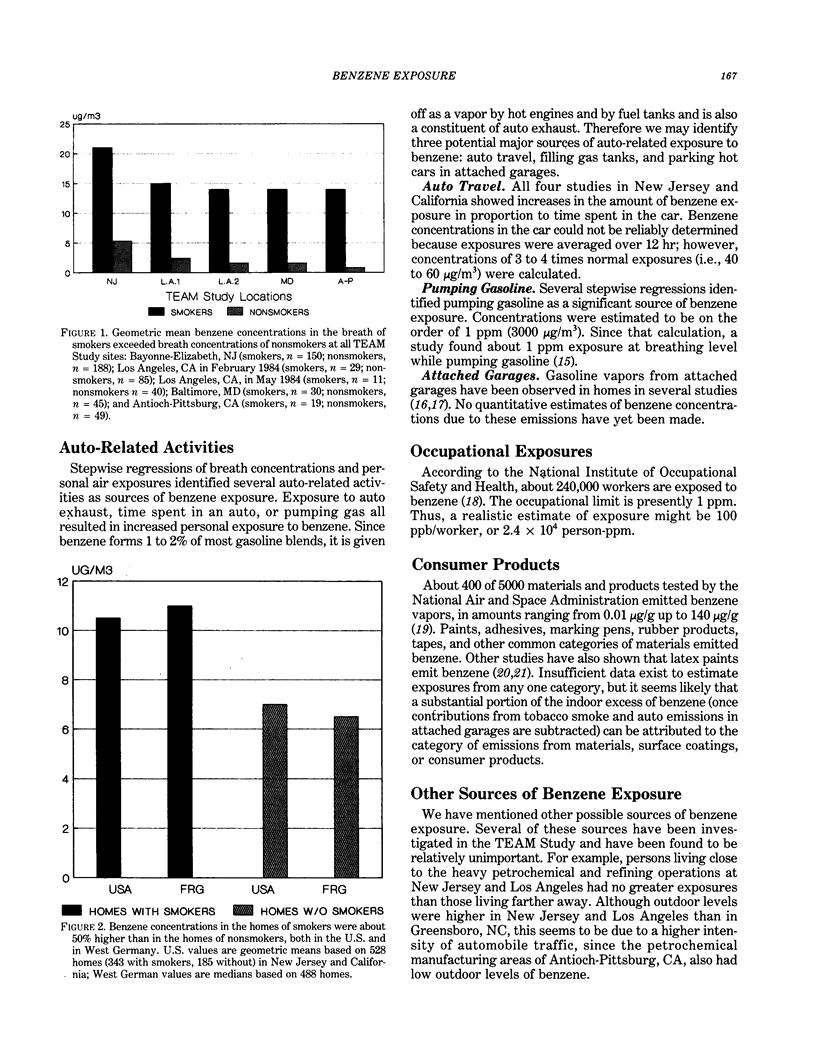
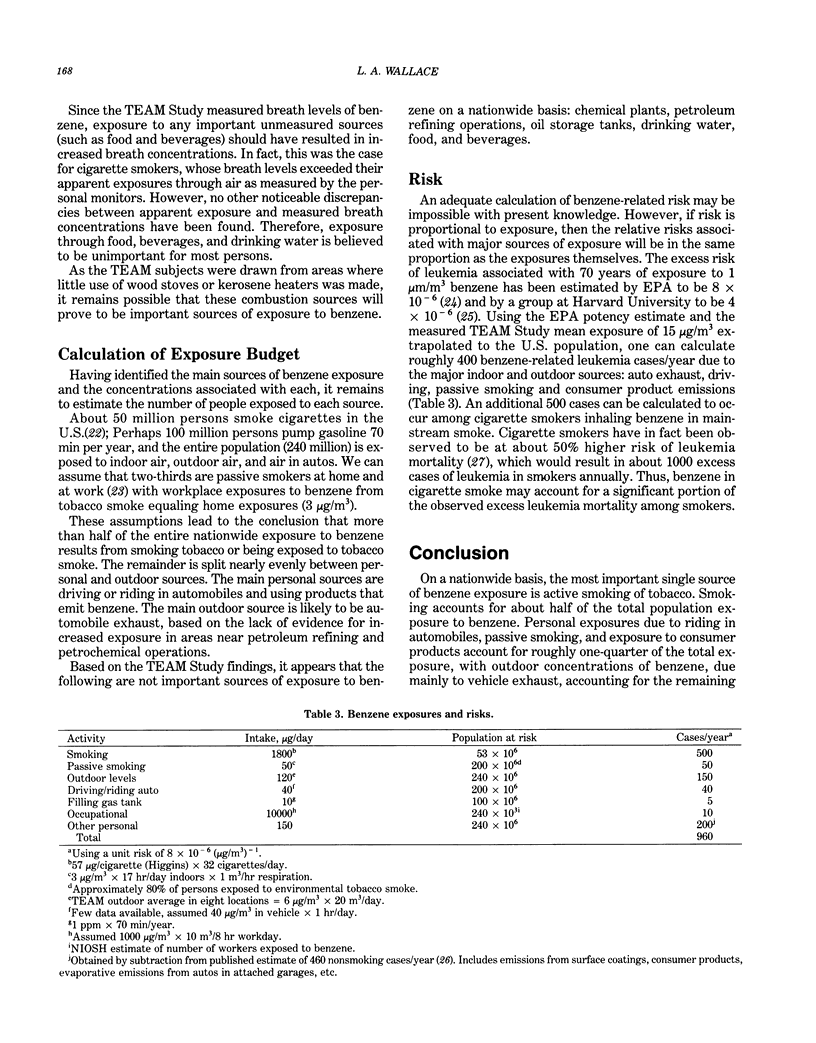
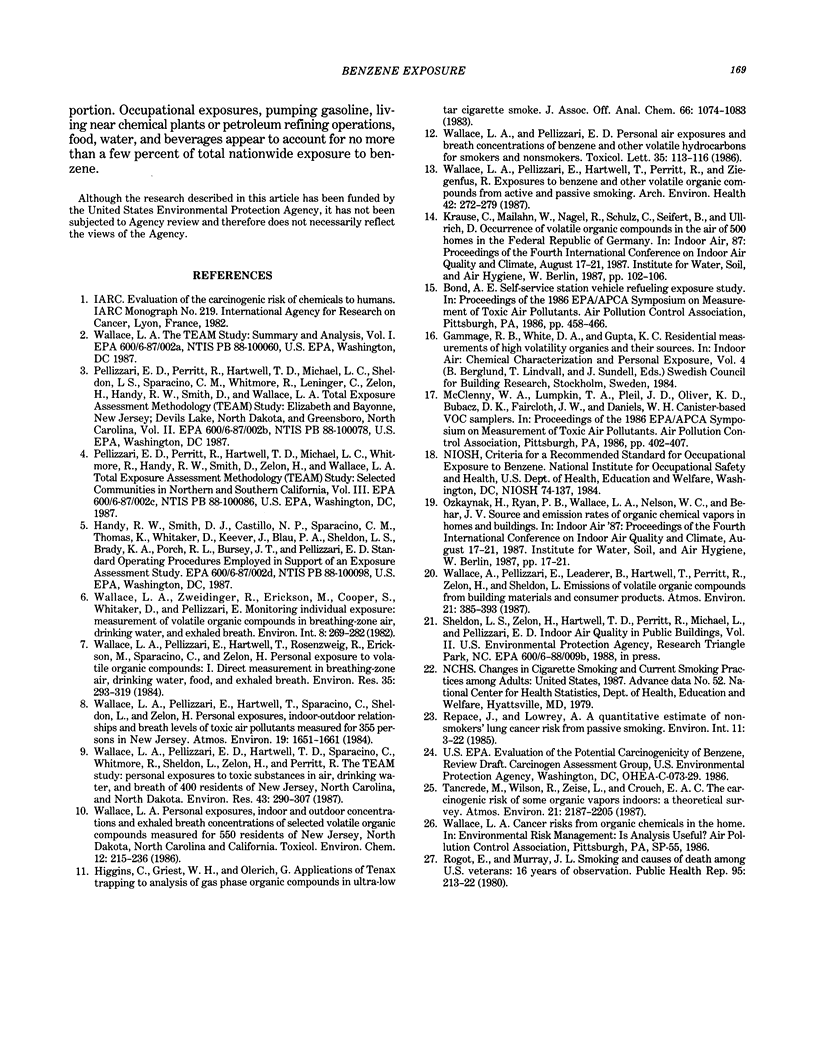
Selected References
These references are in PubMed. This may not be the complete list of references from this article.
- Rogot E., Murray J. L. Smoking and causes of death among U.S. veterans: 16 years of observation. Public Health Rep. 1980 May-Jun;95(3):213–222. [PMC free article] [PubMed] [Google Scholar]
- Wallace L. A., Pellizzari E. D., Hartwell T. D., Sparacino C., Whitmore R., Sheldon L., Zelon H., Perritt R. The TEAM (Total Exposure Assessment Methodology) Study: personal exposures to toxic substances in air, drinking water, and breath of 400 residents of New Jersey, North Carolina, and North Dakota. Environ Res. 1987 Aug;43(2):290–307. doi: 10.1016/s0013-9351(87)80030-0. [DOI] [PubMed] [Google Scholar]
- Wallace L. A., Pellizzari E. D. Personal air exposures and breath concentrations of benzene and other volatile hydrocarbons for smokers and nonsmokers. Toxicol Lett. 1987 Jan;35(1):113–116. doi: 10.1016/0378-4274(87)90094-4. [DOI] [PubMed] [Google Scholar]
- Wallace L. A., Pellizzari E., Hartwell T., Rosenzweig M., Erickson M., Sparacino C., Zelon H. Personal exposure to volatile organic compounds. I. Direct measurements in breathing-zone air, drinking water, food, and exhaled breath. Environ Res. 1984 Oct;35(1):293–319. doi: 10.1016/0013-9351(84)90137-3. [DOI] [PubMed] [Google Scholar]
- Wallace L., Pellizzari E., Hartwell T. D., Perritt R., Ziegenfus R. Exposures to benzene and other volatile compounds from active and passive smoking. Arch Environ Health. 1987 Sep-Oct;42(5):272–279. doi: 10.1080/00039896.1987.9935820. [DOI] [PubMed] [Google Scholar]


